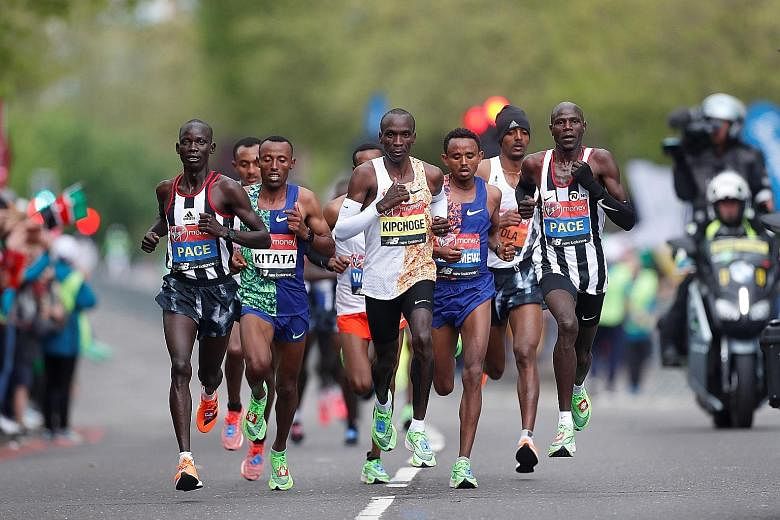As a runner who wants to improve, it is essential that you understand training intensity - how hard you run.
It is the most critical thing to get right in the build-up to The Straits Times Run on Sept 29.
Unfortunately, most runners I come across do not pay much attention to it and certainly do not pay it the respect it deserves.
They just set a goal pace and try to hold it for as long as possible, hoping for the best.
The reason intensity is so important is that it is what determines whether you are running aerobically or anaerobically, burning fat or sugar, learning to clear or accumulate lactate. It also has a significant impact on recovery time.
Essentially, intensity determines how much mileage you can tolerate and how much benefits you can get from training.
There are three primary ways to measure intensity, each with their pros and cons:
• RPE
• Pace
• Heart rate
RPE (rate of perceived exertion) is a subjective measure: how you feel. In my experience, most runners are not very good at gauging how hard they are working and often associate slow with easy and hard with fast.
-

-
HOW TO CALCULATE YOUR TRAINING ZONES
-
ZONE 1: EASY
Subtract your age from 180
Example: 180 - 38 = 142
Zone 1: <142 beats per minute
-
ZONE 2: STEADY
Add 15 to this number to determine your zone ceiling.
Example: 142 + 15 = 157
Zone 2: 142-157 bpm
-
ZONE 3: MOD HARD
Add 10 to this number to determine your zone ceiling.
Example: 158 + 10 = 168
Zone 3: 158-168 bpm
-
ZONE 4: HARD
Add 5 to this number to determine your zone ceiling.
Example: 169 + 5 = 174
Zone 4: 169-174 bpm
-
ZONE 5: VERY HARD
Anything above this number.
Zone 5: >174 bpm
You can be running slow and working hard because you are unfit. Likewise, someone who is aerobically strong like Eliud Kipchoge, the marathon world-record holder, can be fast at an easy effort.
Pace is a measure of output, a popular metric in today's running world. It is great because, like the accelerator in your car, once you make a surge, you see that reflected instantly as an increase in pace.
The downside is that it does not take into account factors like fatigue, dehydration, climate or terrain, so it is easy to overdo things and end up hurt, sick or lacking motivation.
Heart rate, like pace, is an objective measure of intensity. The downside is that changes take longer to show on your monitor.
The benefit - a big one - is that it reflects variable forms of stress, like fatigue from yesterday's run, dehydration, a miserable night's sleep, work, climate, terrain and pretty much all external stressors.
As a coach, I have to prefer one of these to prescribe training. My choice is the heart-rate method because the majority of my athletes are beginner-and intermediate-level folks who have to balance training with work, family and social commitments.
It helps me to optimise for consistency, the ultimate performance enhancer, and offers me a platform to teach the skill of self-control.
That said, it would be ignorant of me to ignore the benefits of RPE and pace, which I teach athletes to use in combination with heart rate to become a more intuitive runner and to track fitness.
We use five heart-rate zones to train athletes at Coached: easy, steady, moderately hard, hard and very hard.
Runners should do roughly 80 per cent of their training in zones 1 and 2. The remaining time should be spent doing tempo running in zone 3 and shorter, harder intervals in zones 4 and 5.
To get started, you can use the formula (see box) to calculate your zones. From there, use them with the plan I created for you to personalise and optimise preparation.
Do not be surprised if you have to run very slowly to stay within your zone. That is short term.
Over time, you will begin to see your pace increase significantly at the same heart rate, a sign of improved aerobic function and efficiency. This is the long-term goal.
• Ben Pulham is a former professional triathlete and the founder of Coached, a heart-rate training programme that helps you to optimise, track and enjoy your training.


